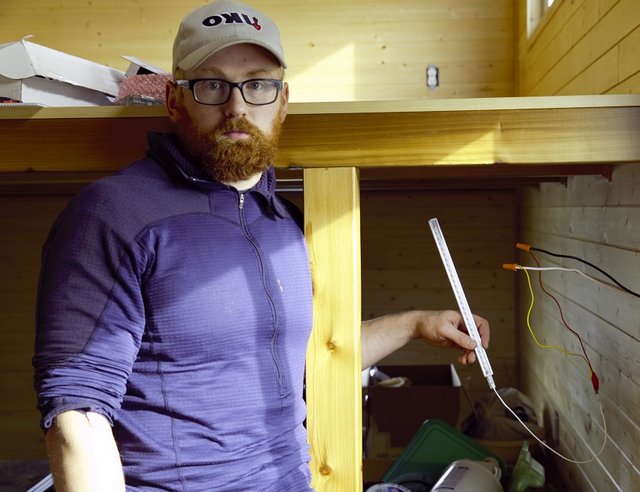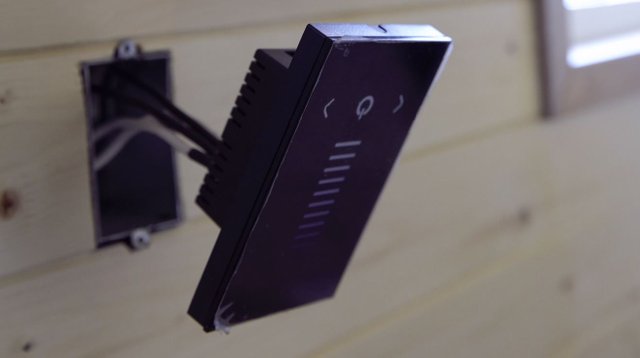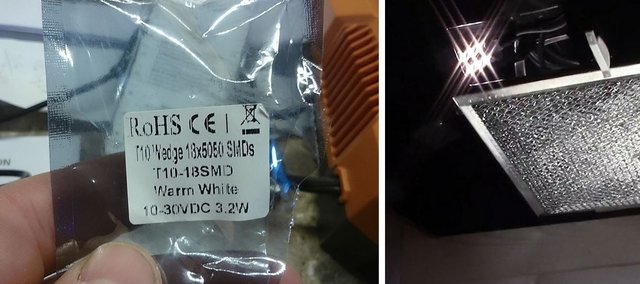Tiny House Episode 24: LED Lighting
The LED lighting was the last major component of the tiny houses electrical system that I needed to tackle. Early on, I completed the rough in (Episode 9 and Adjunct Video). Then, much later, the basic components of the DC system were installed (Episode 19 and Adjunct video).

Many people might not know that LED's run on DC power. The LED light bulbs for conventional homes have circuitry hidden in the base of the bulb which converts the AC power to DC. The LED lighting strips, that are commonly found under kitchen cabinets, also run off of a 12 volt power supply that converts the AC power before sending it down DC circuits to the lighting strips.
After doing a little bit of research, and learning the above information, it made a lot of sense to run all of our lighting on DC power since we already had a DC power system installed in the house. This would be much more energy efficient than having to use an inverter to convert 12vDC to 110 AC and then having the LED light bulbs convert the 110 AC back into DC. This way, if we were off grid, we wouldn't have to have an inverter idling all the time which itself uses an amp or two even if there is no other power draw.
The unconventional ceiling heights and materials made lighting the tiny house effectively a challenge. The ceiling in the main living area is quite high and we wanted normal house fixtures instead of cheap plastic DC fixtures normally found in RV's. This presented a problem because 12v LED lights aren't usually made to fit normal screw in bases found on 110v AC fixtures and lamps. After a bit a searching, I finally found a supplier for Edison base 12v light bulbs.
 Please excuse the blur, I had to take a screenshot of the lighting from a video in lieu of a photo, but at least this gives you an idea what the main lights and loft lights are like.
Please excuse the blur, I had to take a screenshot of the lighting from a video in lieu of a photo, but at least this gives you an idea what the main lights and loft lights are like.The ceiling in the kitchen and bathroom were not only low but they also doubled as the loft flooring leaving no room to hide electrical boxes or wiring. Conventional fixtures would have also been too low to disperse the light properly. A we've experienced in previous homes, having a light in the middle of the room causes our bodies to cast shadows on the counters. For these reasons, we opted to mount strip lights under the shelves in the kitchen and strategically placed strip lights on the bathroom ceiling as well.
We also opted for strip lighting in the lofts, mainly because the ceilings are only four feet high which meant hanging fixtures would be intrusive, and we would undoubtedly hit our heads on them.
One of the features we incorporated for our kitchen and bedroom lighting was a digital dimmer switch. These switches are heat sensitive and respond to the touch of a finger. By sliding your finger up and down the center lines you can quickly lighten or dim the room. You can also use the side arrows to adjust the current by 1% at a time. We didn't have room for a bedside lamp in the bedroom so having the option to dim the lights is nice.
 The digital dimmer switches we installed were sort of a novelty but they have worked out well.
The digital dimmer switches we installed were sort of a novelty but they have worked out well.Finding 12V DC bulbs wasn't too hard. There are a variety of suppliers to the home, recreational vehicle, and marine markets that sell 12DC LED bulbs and strips. There were two stores in particular that I purchased the majority of our LED lighting from.
- Marine Beam had a large selection of 12v Edison base bulbs that allowed us to use normal fixtures for our main overhead lights. They also have some other nifty stuff like tiny wind turbines for generating electricity.
- LED Lights Canada were local, had a fairly large selection of products, and reasonable prices. Being able to go in and physically examine the products before purchasing them was nice. The staff were also able to answer some of my installation questions on the spot. I purchased our LED strip lighting from here.
 The LED replacement bulb for the range hood was only 3.2 watts and it was way brighter than the 10w incandescent that came with it.
The LED replacement bulb for the range hood was only 3.2 watts and it was way brighter than the 10w incandescent that came with it.Our LED lighting is very efficient and if we turned on every light in the house, including the outside porch light, we would be using about 60 watts of power. During the day, with the natural light coming in all the windows, we rarely need more than one light on and at night we usually only need two areas of the house lit up at once. That means at night time we are probably using <20 watts power on average, which is about an amp and a half. Not too shabby, if I say so myself!
Wow you're really a handyman! :) great job
Yeah, seems that I am becoming one! I learned a lot of new skills on this project.
Fabulous! ^_^
Thanks!
excellent working! led programing
Thank You!
Super efficient stats, Matthew!
Small spaces and super efficiency for the win!